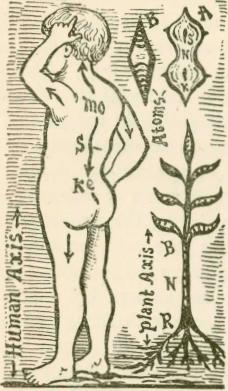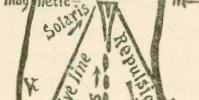HISTORIC GROWTH OF MAN.
COLOR-HARMONIES.
113
A train of thought or
feeling may be carried on awhile by one faculty, and then its third, fifth or eighth complement will assume the train of thought and carry it on forward, while the first rests or is engaged with otherobjects; or, what is more usual, it may take on the proper functions of the first, thus effecting a direct exchange. There are also frequent exchanges between t h e two organs which belong to the same pair. In the true social order, the members of a band make temporary exchanges of employment or position with those who are their thirds, fifths or octaves. For example, those in the groups of food culture may exchange with those who are in the group of luxuries;
those in the groups of wealth may exchange with those in rulership. The different branches of labor are therefore related to each other bv_ fixed and eternal laws of harmony.
THE LINES OF MOVEMENT and centers of action for the muscles are all arranged in harmony with these
of
and are therefore adapted to the trinities in the social grouping of members. A member may find his true place with certainty. There is no more good sense or good economy in letting each member grope about blindly to find by accident his work and place in the social scale of harmony, than there would be to let each member of a music choir or band guess as he went along what notes would fit in and chord with the other members, and so have no written music with scales and tunes. No one now would commit this folly in our civilization.
THE COLOR-I-IARMONIES which belong to architecture and costume must have a brief notice here. Every color is a definite kind of force. In chemical changes, in the growth of plants and animals,
.1
,
c
I
t
+11
yo
or
axes
.Sok.
aQ
f.
architecture
the
scales of number and proportion. In this back view of the human axis, the center for the upper limbs is marked at Mo, and that for the lower limbs at K e. Between these, and back of the stomach, is the node of vibration at S. In the side view of polar lines we see that the principal lines of movement cross each other at the stomach or s o l a r plexus, sto.
In the harmonic order
rooms are grouped in trinities,
ro
1
r


